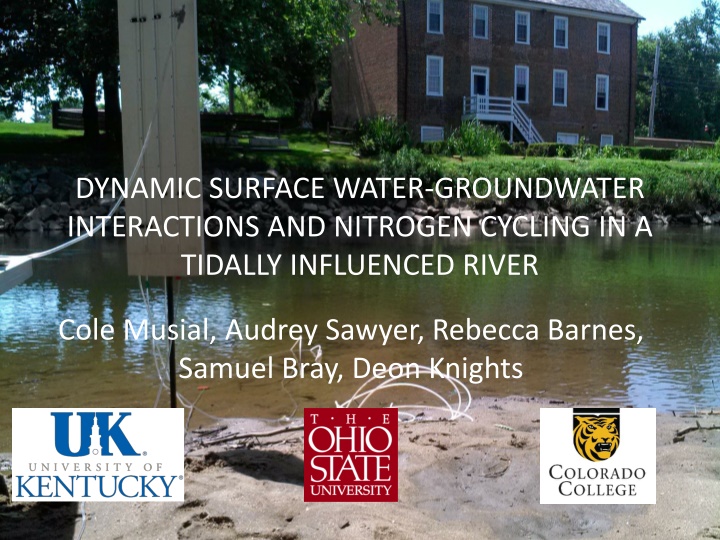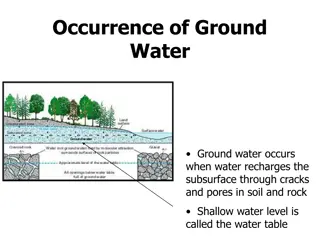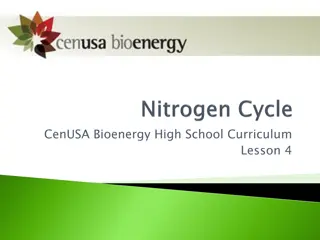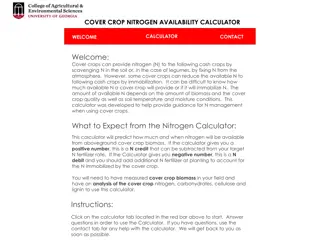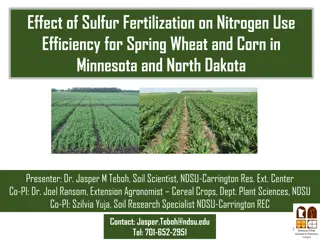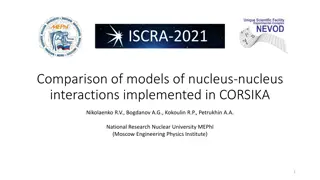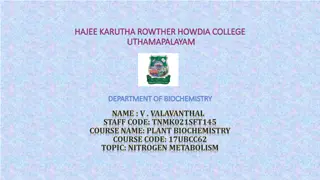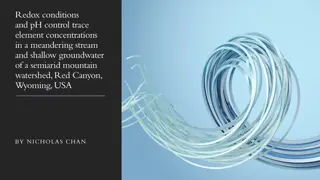Surface Water-Groundwater Interactions and Nitrogen Cycling in a Tidally Influenced River Study
Study on the dynamic interactions between surface water and groundwater in a tidal river, focusing on nitrogen cycling. The research highlights the impact of tidal fluctuations on bank storage, nitrogen transformation, and nutrient cycling. Findings suggest that river discharge affects the exchange processes, with implications for nutrient levels at different tide stages.
Download Presentation

Please find below an Image/Link to download the presentation.
The content on the website is provided AS IS for your information and personal use only. It may not be sold, licensed, or shared on other websites without obtaining consent from the author.If you encounter any issues during the download, it is possible that the publisher has removed the file from their server.
You are allowed to download the files provided on this website for personal or commercial use, subject to the condition that they are used lawfully. All files are the property of their respective owners.
The content on the website is provided AS IS for your information and personal use only. It may not be sold, licensed, or shared on other websites without obtaining consent from the author.
E N D
Presentation Transcript
DYNAMIC SURFACE WATER-GROUNDWATER INTERACTIONS AND NITROGEN CYCLING IN A TIDALLY INFLUENCED RIVER Cole Musial, Audrey Sawyer, Rebecca Barnes, Samuel Bray, Deon Knights
Conceptual Model Stage fluctuations in tidal rivers drive bank storage Bank storage zones may be intense zones of nitrogen transformation
High tide Low tide
Tidal Surface Water-Groundwater Exchange Average Tidal Exchange over 1 cycle = .02m3 Percent of River Discharge = 0.4% K = .000269m/s
Conclusions Low river discharge corresponds with reversals in surface water-groundwater exchange. Peak aquifer discharge is at times of intermediate stream discharge. Tidal rivers are dynamic environments for nutrient cycling DO and nitrate vary with tides near water table and streambed due to surface water- groundwater exchange
Acknowledgments Anthony Aufdenkampe Ph.D. Louis Kaplan, Ph.D. Holly Michael Chris Russoniello Kaileigh Calhoun Hale Byrnes House, Kim and Ralph Burdick
